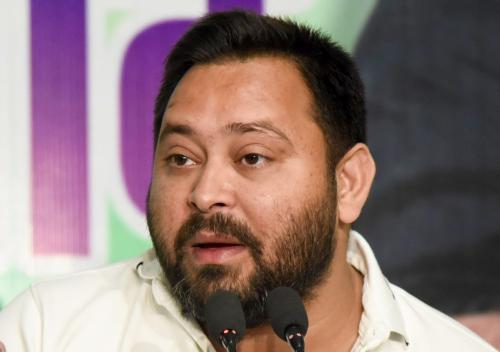BY NIKHILA NATARAJAN New York, March 25 (IANS) Quietly, America changed in the third week of March 2020, just as the cherry blossom trees prepared to bloom. The emptying of Americas towns and cities happened in bits and pieces. Barber shops closed, restaurants shuttered, people began wearing bandanas and question marks on their faces. Americans who would typically tout their crowded after-work schedules to avoid weekday socials are now totally open with nowhere to go. Young people, who are being urged by the White House to align to the new normal, continue to bristle and drive their cars too fast in ghost towns. The redefining of personal space during the coronavirus pandemic is testing Americans understanding of patience like it has rarely been done before. With entire communities locked down, the constant waiting for seemingly small things to tip the balance is now a cross generational, communal effort. The stress is real, compliance is patchy and many continue to be "mad" about their social lives being put on hold by state power. At no other time in the country's history have more than 300 million Americans been pushed into an intimate embrace of medical best practice and also told that hospitals won't have room if the curve isn't flattened. The COVID-19 caseload in the US is over 41,000, the death toll has topped 540 and New York has become the new epicentre with 99 deaths. Three takeaways emerge from what's effectively the first full week of the new social distancing guidelines in the US, implemented at scale. 1. How much social distancing? Depends The high level messaging on social distancing has landed well but questions remain about the micro moments. Are strolls and jogs okay? In the absence of specifics from the federal government, states are recommending exercise as a solitary activity and asking people to limit outdoor recreational activities to non-contact sport. "Don't go out!" says Anni Lundy, of Houston, Texas, whose husband works as a first responder. "You'll be surprised how complacent people are about this. They're like e we're not changing our lives one bit." In San Francisco, California, which has asked residents to "shelter in place", Connor Regan says he continues to go out for short walks in his neighbourhood. "It's still okay, even by the new regulations," he says. A new study published in the New England Journal of Medicine is telling us that COVID-19 can live in the air and on surfaces between several hours and several days. According to the study, "the virus is viable for up to 72 hours on plastics, 48 hours on stainless steel, 24 hours on cardboard, and 4 hours on copper. It is also detectable in the air for three hours". 2. What to do with the rule breakers? As people continue to break rules and head to the beaches and parks, law enforcement response has been to either simply cut off the approach roads leading to popular destinations or send people home if they end up in places that are off bounds. Different US states are calling the rules by different names e social distancing, shelter in place, or safer at home but the rules are essentially the same. Officials are reporting back almost daily that "social distancing really works" but rule breakers abound. "Salons are closed but sales are brisk at beauty stores. That means they're doing their hair at friends' houses. When you've got stupid like this, you'll see a spike in cases," Greg Chan, a resident in Union county, New Jersey, told IANS. 3. Digital learning isn't seamless With school closures covering the lion's share of 50 states, teachers across America plunged into remote learning for everything from gym classes to music instruction and the regular syllabus. "They don't have it figured out at all. They're throwing pies on the wall and we're cleaning up," says a New Jersey mom who is now actively involved in her child's day to day school work. Zoom has emerged as a go-to video sharing destination but teachers are still figuring out how to work it. Plenty of schools have yet to do a single face to face real time online lesson and everyone involved is getting a crash course on how many bugs there can be in a massive distance learning experiment begun with zero planning time. More than 118,000 public and private schools in 45 states have closed, according to Education Week. 4. Trump versus the doctors Anxious for answers, Americans are hearing completely opposite views from within the White House coronavirus task force. President Donald Trump and his government's top infectious disease expert, Dr. Anthony Fauci are publicly sparring over whether a malaria drug would work to treat people with coronavirus disease. Currently, there is no medicine approved for treating COVID-19. Fauci says that a vaccine could take 18 months, Trump projects a far quicker timeline. Trump announced Monday that he intends to reopen country in weeks, not months, sending alarm bells ringing across the medical community. In the middle of all this, New York Governor Andrew Cuomo has emerged as one of the key leaders responding to the pandemic. America's patchwork response is reflected in how its society is taking its cues.
America has changed, its patience being tested like never before
- by Rinku
- March 25, 2020 2 minutes

America.











